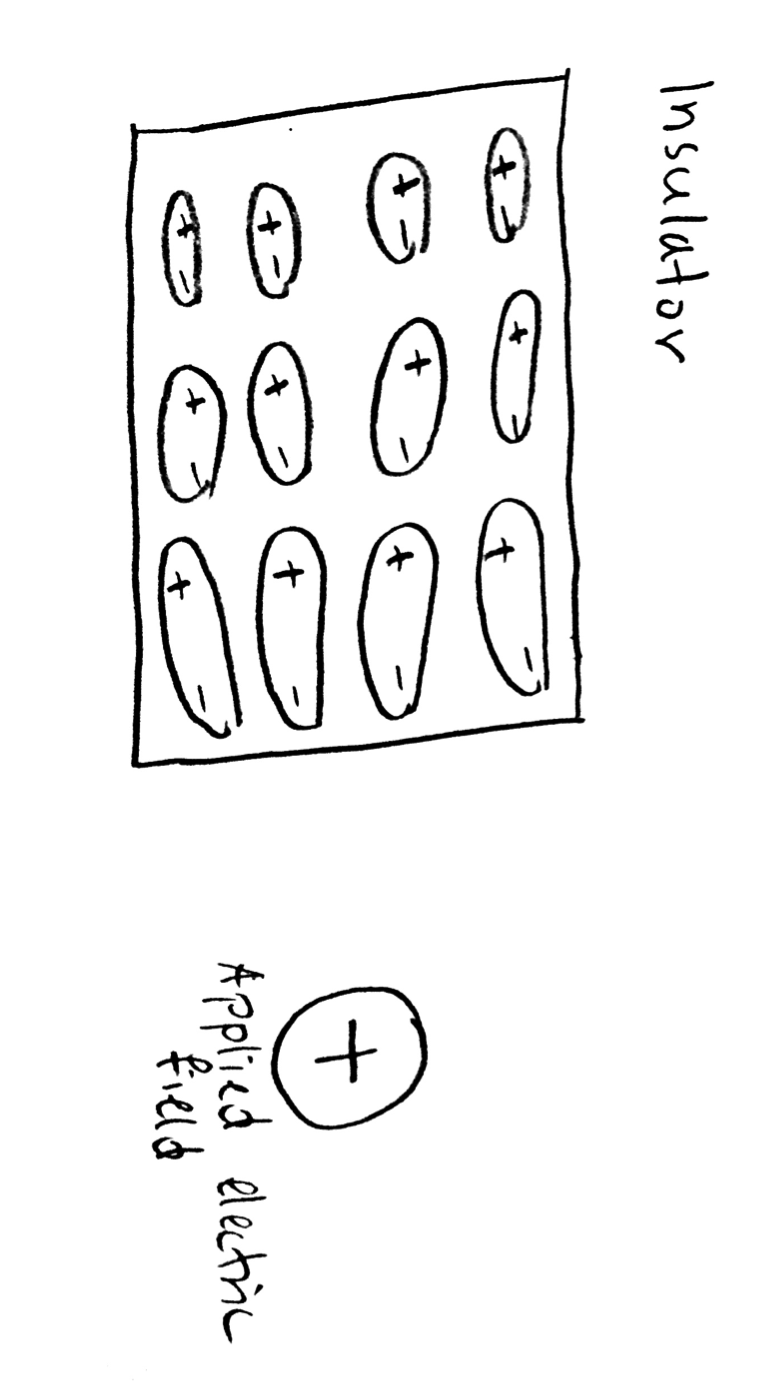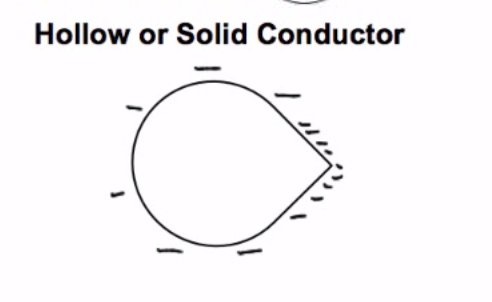Charged Conductor and Charged Insulator
RESERVED by JAY SHAH Reserved Fall 2016 Hayley Tsuchiyama RESERVED SPRING 2017 LILY MASTERS
Different materials polarize differently in the presence of an electric field depending on their physical makeup. Two classes: Conductors and Insulators, are extremely important to understanding equilibrium in different materials.
Introduction
All materials are made of atoms that contain positive and negative charges (electrons and protons). While all materials contain these two basic units, their distribution patterns change depending on the microscopic behavior of the atom's movement in an electric field. These differences have created two distinct classes of materials: Conductors and Insulators. The physical principals of both classes will be discussed.
A quick chart is displayed below summarizing major differences between Conductors and Insulators.
Conductor
A conductor is an object or type of material that allows the flow of electrical current in one or more directions. The most important factor of all conductors is that they contain mobile charges. In many chemistry classes, metals are described as a sea of electrons, this means that the negative charges within that metal have the ability to move freely throughout the entirety of the metal. This means that if a charge is transferred to a conductor at any given location, that charge will quickly be distributed across the entire surface of the object. It is important to note that not all the electrons have the ability to move, only the valence electrons, the electrons in the outer shell of the atom.
Some examples of common conductors include:
- Metals
- Ionic (Salt) Aqueous Solutions
- Human Body
Because of their ability to move electrons freely, conductors transfer both heat and electricity very easily. It is fairly easy for conductors to conduct an electric current under the influence of an electric field.
Insulator
An electrical insulator is an object or type of material that restricts or impedes the free flow of electrons within that material. Unlike conductors, insulators do not contain mobile charges, and do not have valence electrons that are free to move throughout the material. Because of this limitation, if a charge is transferred to an insulator at any given location, that excess charge will remain at the initial location. These charges are rarely distributed evenly across an insulator's surface.
Some examples of common insulators include:
- Rubber
- Glass
- Air
Because insulators lack the ability to have electrons move freely, they cannot transfer heat and electricity very well. It is nearly impossible to conduct an electric current under the influence of an electric field.
Charge on a Conductor
An object made of a conducting material will permit charge to be transferred across the entire surface of the object. If charge is transferred to the object at a given location, that charge is quickly distributed across the entire surface of the object. The distribution of charge is the result of electron movement. Since conductors allow for electrons to be transported from particle to particle, a charged object will always distribute its charge until the overall repulsive forces between excess electrons is minimized. This all occurs because of the polarization within the conductor.
If the conductor is spherical, charge is evenly distributed on the outside surface.
If the conductor is not spherical, surface charge density is higher where radius of curvature is smaller. (i.e on sharp points or corner of conductor.)
In the example here, a positively charged metal rod is touched to a neutral conductor. The positive charge from the metal rod is transferred to the surface of the conductor. Because the valence electrons have the ability to move, the positive charge is spread out over the surface of the conductor.
Charge on an Insulator
In contrast to conductors, insulators are materials that impede the free flow of electrons from atom to atom and molecule to molecule. If charge is transferred to an insulator at a given location, the excess charge will remain at the initial location of charging. The particles of the insulator do not permit the free flow of electrons; subsequently charge is seldom distributed evenly across the surface of an insulator.

The electrons don't need to spread out evenly. Instead, they stay at where they were.
While insulators are not useful for transferring charge, they do serve a critical role in electrostatic experiments and demonstrations. Conductive objects are often mounted upon insulating objects. This arrangement of a conductor on top of an insulator prevents charge from being transferred from the conductive object to its surroundings.
See also
Charge Transfer This topic talk about the charge transfer between objects
External links
Explenation of why does charge concentrate at a point on a conductor
References
http://www.physicsclassroom.com/class/estatics/Lesson-1/Conductors-and-Insulators
[http://www.schoolphysics.co.uk/age16-19/Electricity%20and%20magnetism/Electrostatics/text/Electric_charge_distribution/index.html http://www.schoolphysics.co.uk/age16-19/Electricity%20and%20magnetism/Electrostatics/text/Electric_charge_distribution/index.html
